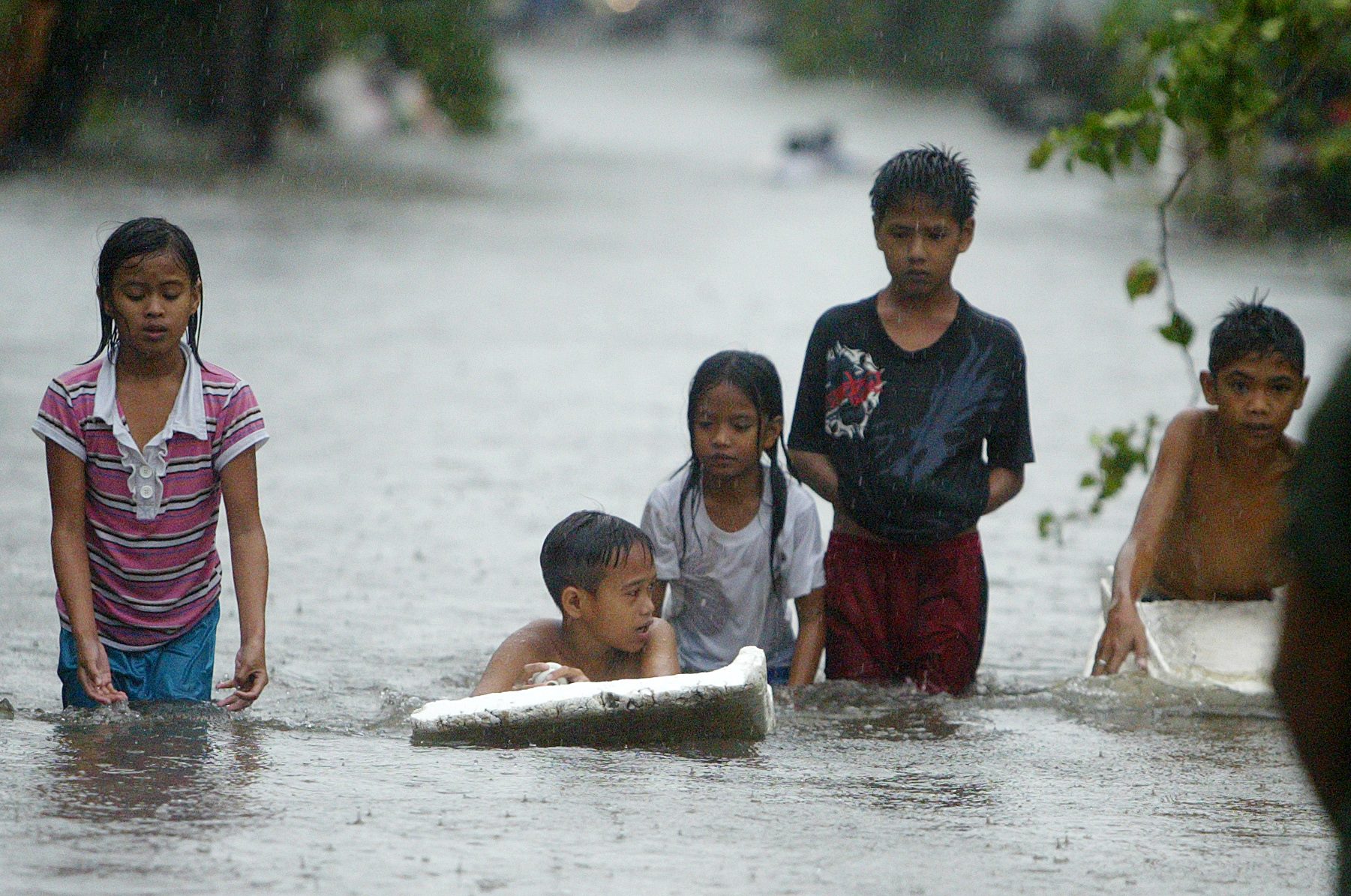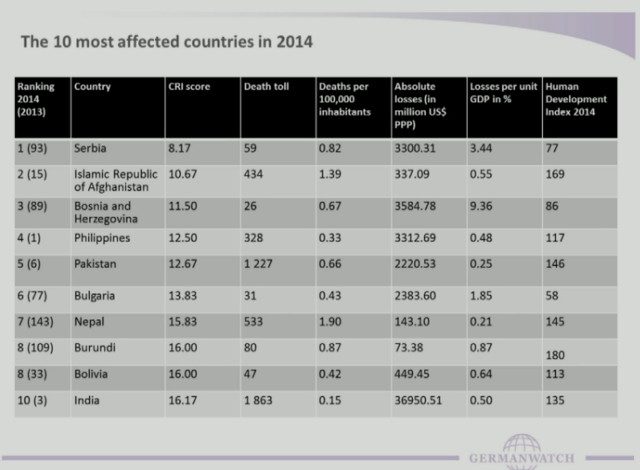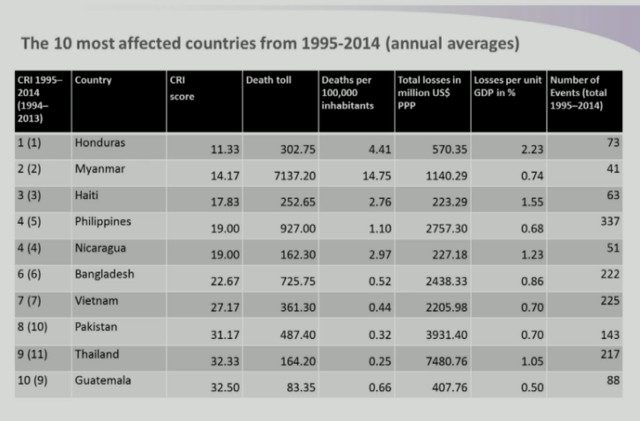SUMMARY
This is AI generated summarization, which may have errors. For context, always refer to the full article.

MANILA, Philippines – The Philippines remains among the top 5 countries in the world that have suffered the most from climate change so far.
The country was ranked the top 4th country to have endured climate-linked disasters in 2014 in the Global Climate Risk Index 2016 released by Germanwatch on Thursday, December 3.
In the same Index, the Philippines was also named the top 4th country to suffer from climate change impacts over a longer time period: 1995 to 2014.
The Philippines has both gained and lost in the Index, which was launched on the sidelines of the UN climate conference in Paris.
Its 4th-place ranking in the short-term index (based only on 2014 events) is an improvement from its ranking in last year’s Index – 1st place based on 2013 events.
But in the long-term index (1995-2014), it climbed to 4th place from 5th place last year.
The Philippines was given special mention during the launch because of one other observation.
In the past 10 years, the Southeast Asian country has appeared among the top 10 countries victimized by climate change a total of 7 times, a record number, said Sonke Kreft, Germanwatch’s team leader for international climate policy.
Country rankings in the Index are based on indicators like death tolls from climate-linked disasters and losses per unit GDP.
Less storms in 2014
It was Serbia that topped the list of most affected countries in 2014. Kraft said this was due to a single severe flooding event which left more than 100,000 people dead.
Second place went to Afghanistan and then Bosnia and Herzegovina before 4th-placer Philippines.

The improvement of the Philippines’ ranking may be due to the fact that 2014 was “relatively low in terms of tropical storms,” said Kreft.
In 2014, the Philippines lost 328 lives to climate-related disasters with a ratio of 0.33 deaths per 100,000 inhabitants, according to Germanwatch. It lost $3.3 billion and sustained a 0.48% in loss per unit GDP.
The Philippines did not fare as well among the long-term affected countries, jumping to 4th place from 5th.

First place went to Honduras, followed by Myanmar and Haiti.
Despite this, the Philippines still had the most number of disaster events from 1995 to 2014: a total of 337. Vietnam, the country with the second most number of disaster events, was still around 100 disasters away with 225 events during that period.
‘Vulnerable, not helpless’
The Philippines’ Science and Technology Assistant Secretary Raymund Liboro was present at the Index launch to react to the findings.
He said figures from the Philippines’ weather agencies corroborate with the Index.
“Three out of the 10 storms that make landfall in the Philippines are category 4, or killer typhoons. Three of the most destructive typhoons have occurred in the last 4 years,” he said.
The Philippines has been tagged as the “poster boy of climate change” ever since it was devastated by Yolanda (Haiyan), the strongest typhoon in recent history.
But Liboro stressed, “While we consider ourselves vulnerable, we don’t consider ourselves helpless.”
The Philippines has taken pains to improve its national disaster management policies, allowing it to “count disasters that did not happen.”
As an example, Liboro cited landslides during 2015 typhoon Lando (international name Koppu) that buried towns yet left no casualties because families were evacuated 48 hours before. Similar landslides during Typhoon Pablo (Bopha) in 2012 killed almost 1,000 people.
‘We want 1.5°C limit’
But the Philippines is doing much more to ensure the freak typhoons don’t happen in the first place.
The country currently leads a group of over 20 climate-vulnerable and poor countries calling for the same thing: for the Paris climate change agreement to target for 1.5°C as the warming limit instead of the more accepted 2°C. (READ: Renowned climate expert: 1.5°C goal ‘difficult but morally correct’)
This group of nations, called the Climate Vulnerable Forum, believe the 0.5°C difference between the two targets still spells more super typhoons, disastrous sea level rise, and devastating drought.
“While some consider 1.5°C an abstraction, for us, it’s not. It’s a figure backed up by experience, figures, and the aspirations of 100 million people,” said Liboro.
While the rest of the world struggles to understand climate change, the people of the Philippines, he said, already consider themselves climate change survivors. – Rappler.com
Add a comment
How does this make you feel?
There are no comments yet. Add your comment to start the conversation.